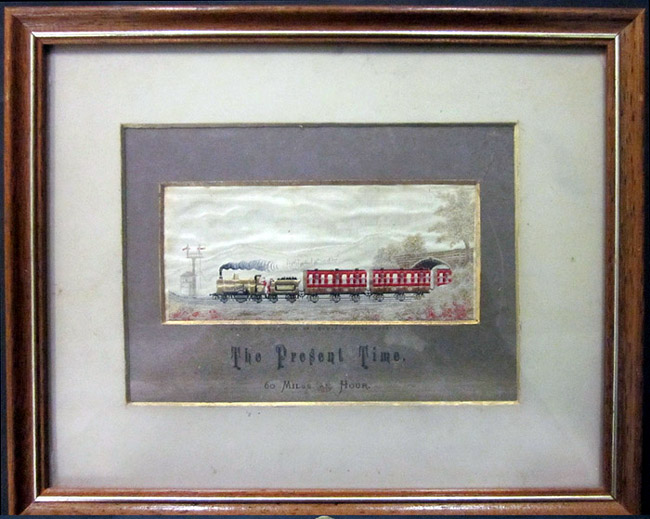Learn about antiques and collectables...
Click on a category below to show all the entries for that category.
Learn about and understand the items, manufacturers, designers and periods as well as the specialist terms used in describing antiques and collectables. Either click one of the letters below to list the items beginning with that letter, or click on a category on the left side of the screen to list the items under that category.
Circle of ......
In the opinion of the cataloguers, a work of the period of the artist, and closely related in that person's style.
Diptych
A diptych is a drawing or painting in two parts. Traditionally the two panels were hinged together and could be closed like a book. Nowadays the word covers two panels that are displayed side-by-side and may be a continuous but divided image, or may be two separate but closely related images.
Oleograph
An oleograph is a type of print that was popular in the late 19th and early 20th centuries. It is a high-quality reproduction of an original painting or artwork, made using a process called chromolithography. In this process, the original painting is first transferred onto a series of lithographic stones or plates, one for each colour used in the original artwork.
Each stone or plate is then inked with a different colour, and the paper is run through the press once for each colour, creating a full-colour reproduction of the original artwork. The resulting print has a vibrant, almost three-dimensional quality, and can be mistaken for an original painting.
Oleographs were especially popular in the late 1800s, as they offered an affordable way for people to enjoy reproductions of famous paintings and artwork in their own homes. They were often framed and hung on walls, and could be found in homes, hotels, and other public spaces. While oleographs are no longer as common today, they remain a fascinating example of early printing technology and the art of reproduction.
Sharp, Martin
Martin Sharp is a Sydney artist well known for his support and promotion through graphic posters, of amongst others, Tiny Tim, Luna Park and Arthur Stace, the 'Eternity Man'.
In the early 1960s along with Richard Walsh and Richard Neville he started the controversial underground satirical magazine 'Oz' and provided many of the graphic illustrations.
In the late 1960s he designed iconic psychedelic album covers for Donovan's 'Sunshine Superman' and Cream's 'Disraeli Gears' as well as psychedelic posters for Bob Dylan and Jimi Hendrix.
In 1970 on his return to Sydney he set up the 'Yellow House' exhibition space at 59 Macleay Street, Potts Point which was based on the idea of a community of artists in the way of Van Gogh's Yellow House at Aries.
Artists involved included George Gittoes, Peter Powditch, Peter Kingston and Brett Whiteley.
Stevengraphs
Coventry was the centre of silk weaving in the mid 19th century, but after the introduction of a free trade agreement in 1860 that removed import duties on silks, brocades and ribbons, and a change in fashions, the silk ribbon industry in Coventry was no longer competitive. This led to financial difficulties for the weaving factories, and they looked for ways to diversify.
About 1862, one of the weavers, Thomas Stevens was able to complete modifications to his ribbon weaving Jacquard looms to produce multi-coloured woven silk pictures, which he called Stevengraphs. As well as pictures often featuring horse racing, foxhunting, or portraits, he produced woven silk bookmarks, greeting cards and postcards. The pictures were a standard size of 5 1/2 inches x 2 1/2 inches.
Stevens was able to successfully market his products and he dominated the woven silk market from the 1860's until 1940 when "The Stevengraph Works" were destroyed by German bombing during World War II. Other manufacturers followed Stevens lead, but regardless of manufacturer, all woven silk items are known as Stevengraphs.
Studio of ....
In the opinion of the cataloguers, a work possibly executed under the supervision of the artist.
